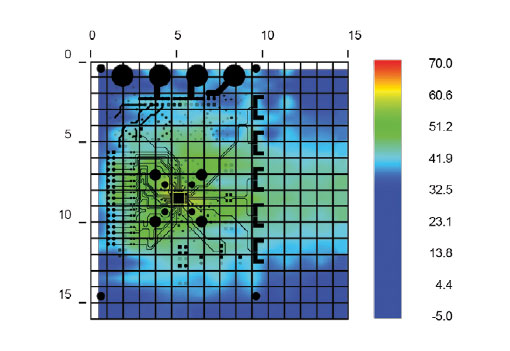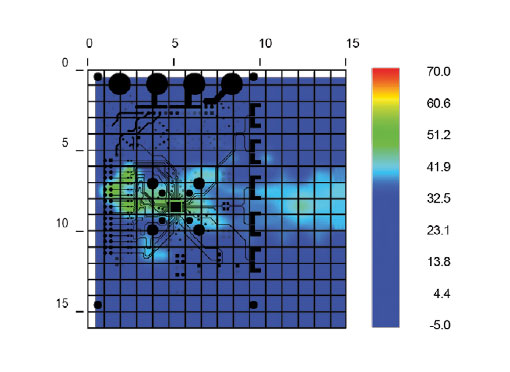Case Study - SSCG
EMI Near-Field Emissions Profiles:
Quantifying Reduced EMI Gets a “Wow”
Background:
A major semiconductor manufacturer developed a Spread Spectrum Clock Generation (SSCG) design implemented on the Deserializer’s parallel bus. The SSCG function provides a means for reducing the emissions by spreading the radiated peak energy over a wider frequency band. As shown in Figure 1, the frequency variation occurs around the nominal clock centre frequency (“centre spread modulation”). The spreading of the spectrum is plus or minus 1.0% (fdev). At the receiver parallel bus, the outputs modulate the clock frequency and data spectrum over time at a modulation rate in the range of kilohertz (fmod). The specified SerDes chipset targets automotive manufacturers who have established requirements for low EMI emissions profiles for installed electronic devices.

Research Objective:
Generate compelling, quantified evidence to present to automotive industry customers that the SSCG feature reduces EMI emissions.
Test Method:
Place the device under test (DUT) on the in-house EMScanner with SSCG turned “OFF”, apply power, and capture the emissions profile in a PC. To demonstrate the effectiveness of the feature, run the identical test, but with the SSCG function turned “ON.”
Test Results:
The EMScanner system generates and displays the emissions profile in real-time and includes both spatial and spectral results. The profile of the DUT with SSCG turned “OFF” appears in Fig. 2.
Fig. 2 EMI emission profile with SSCG “OFF”


Fig. 3 EMI emission profile with SSCG “ON”


Conclusions:
The team carefully compared the spatial and spectral scan results that rather dramatically quantify the benefit of the SSCG feature. This feature can drastically reduce overall electromagnetic radiation. Whenever the customer support team has presented the above comparison, it universally results in a customer response of “Wow.” The reason: Automotive engineers’ biggest challenge is reducing EMI. Any features that reduce EMI result in faster time-to-market, less shielding, and lower costs.
Immediately quantifiable results allowed the design team to quickly investigate four different ways to implement SSCG and immediately compare quantified results. Spatial and spectral scans also improved the company’s ability to document new features. Perhaps most importantly, when customers see the EMI profiles, they exhibit a strong positive response to the quantified EMI emissions profiles.
SCANNER USERS
